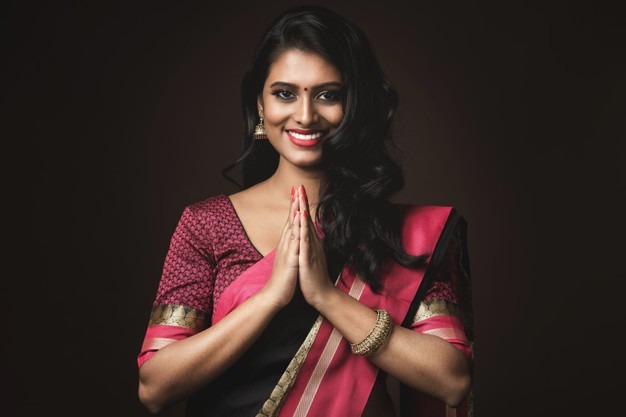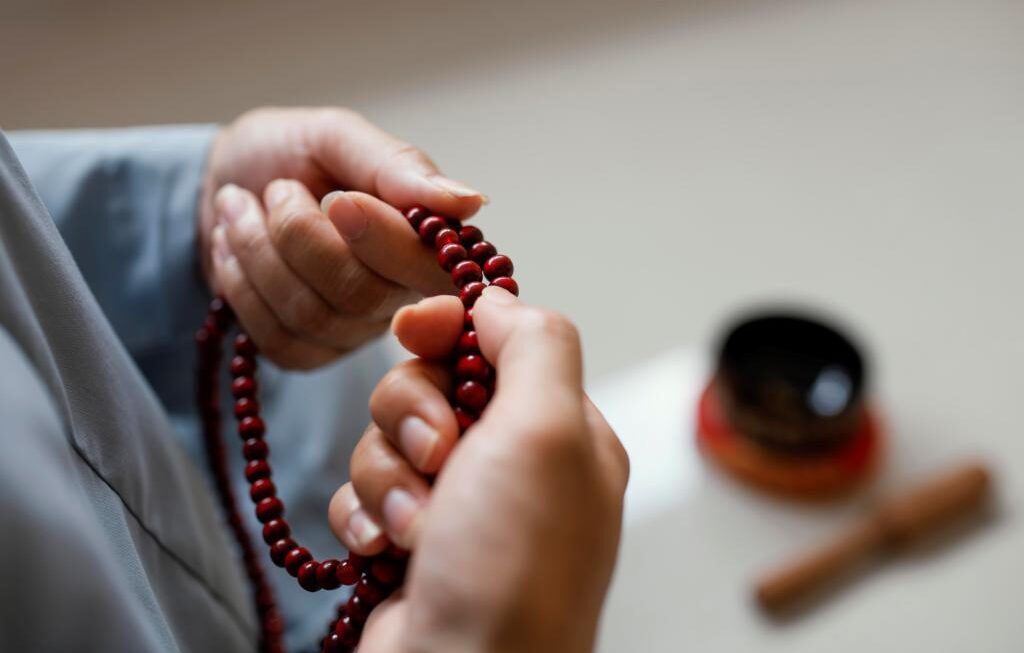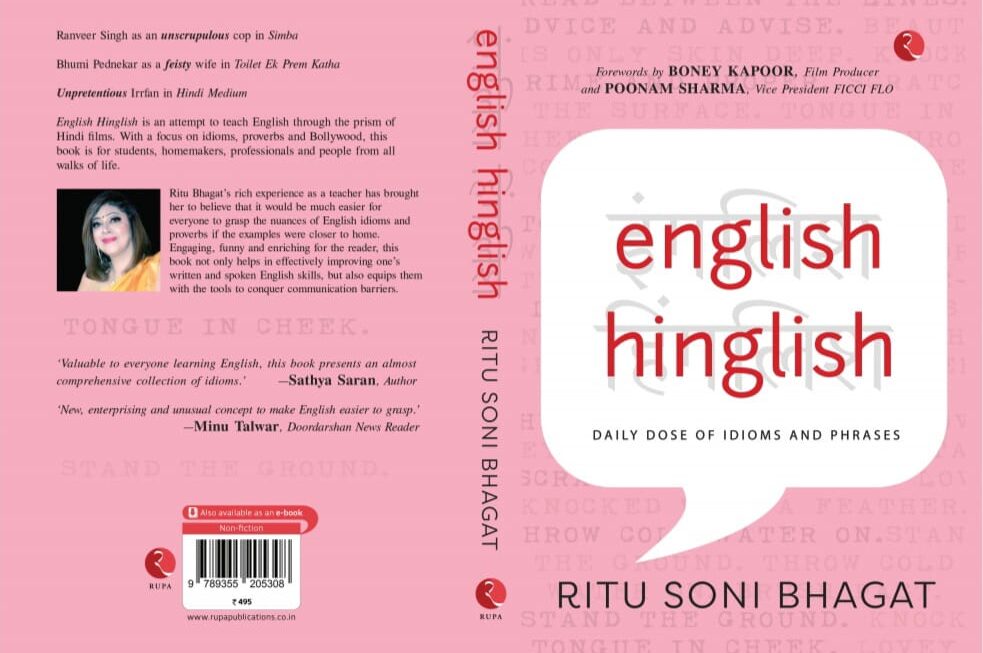Six yards of elegance in a myriad spectrum of hues, a soft sensuous drape, yes, that’s a saree!
I love sarees and am a happy owner of several. I particularly love, cherish and wear natural fabrics, matchless pieces of cotton, and silks. As a child, I would see my mother save in a Chit fund of a saree store to buy Kancheevaram silks or buy Bengal cotton from men who would bring big bundles in a rickshaw. The fascination to know the differences in weaves, textures, identifying marks started then, progressively improving.
Through my travels, I invariably try to find local indigenous weaves and browse in emporiums to find my special sari. Even though the history and origins of each kind of sari is a delight to know, I will try to make it brief as I launch on the South Indian saree story.
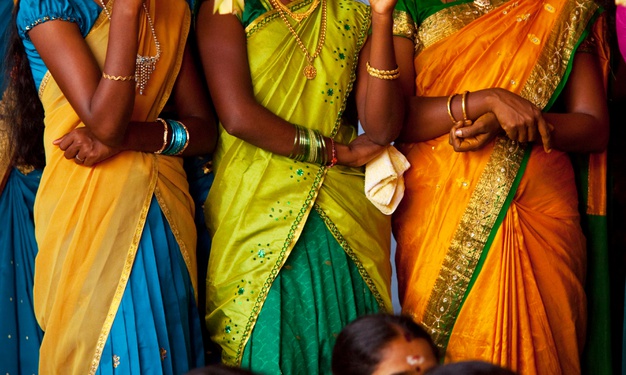
Kanchipuram silk sari is made in the Kanchipuram region in Tamil Nadu, India. The saris, known for their quality and craftsmanship are woven from pure mulberry silk thread. To weave this sari three shuttles are used. While the weaver works on the right side, his aide works on the left side shuttle. In a genuine Kanchipuram Silk Sari, body and border are woven separately and then interlocked together.
The joint is woven so strongly that even if the saris tears, the border will not detach. Temple borders, checks, stripes, and floral (buttas) are traditional designs. Sarees vary widely in cost depending upon the intricacy of work, colors, pattern, a material used like zari (gold thread), etc.
Coimbatore silk saree is woven using pure silk in the Coimbatore region of Tamil Nadu. The specialty of this silk saree is durability, softness, and prints.
Mysore Silk from Karnataka stands out for its unique smooth luxuriant, uniquely minimalistic, texture though machine-made! The elegant sarees have a plain single colour base fabric of 100% pure silk with a narrow strip of gold zari border at both ends. Although the exact history of the Mysore Silk saree can be traced back to 1912 AD, its origins date back to 1785 AD, when the first silk cocoons were imported to Mysore by Tipu Sultan.
Bangalore Silk saris manufacturing began in 1898 by Jamshedji Tata by establishing silk farms in Basavanagudi near Bangalore. The fine mulberry silk produced were transformed into stunning soft silk sarees with a natural sheen still the best choice for many women.
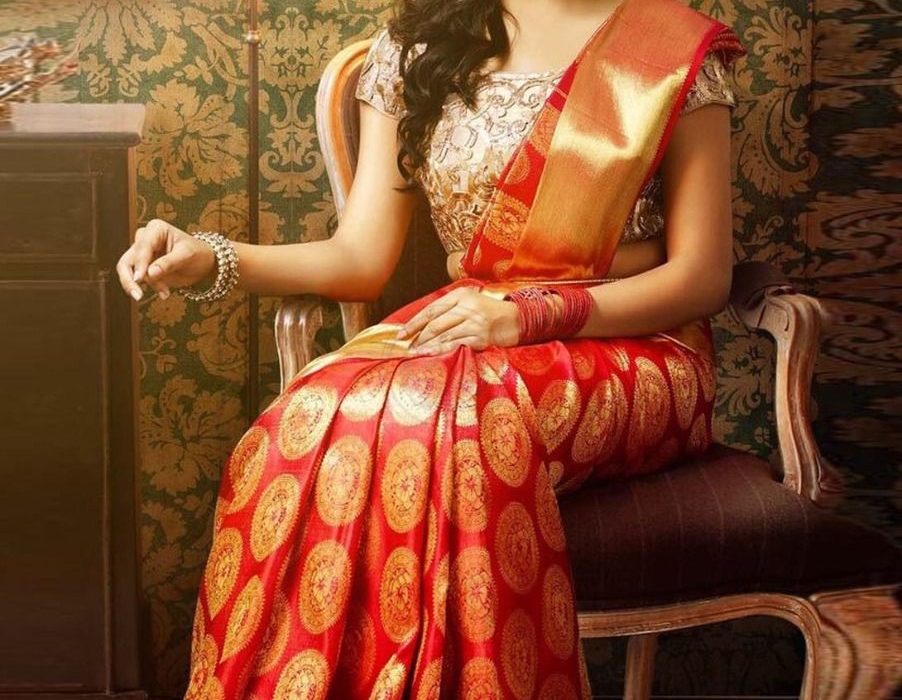
Uppada Silk sarees originate from a town of the same name in the East Godavari region of Andhra Pradesh They are made from the traditional Jamdani method which means the design is on both sides. Using only non-mechanical techniques, Uppada Silk sarees are measured by the length and breadth count of threads. These saris have two weavers operating on a single loom and entwining beautiful and lovely motifs on the fabric.
The artisans also use tons of zari work in gorgeous designs. As this is completely handwoven it takes two painstaking months before an excellent saree is made. Around forty percent of the local weavers are women.
Pochampally ikat is a saree made in Pochampally, Telangana India. Telangana is one of the ancient Ikat weaving centers in India, along with Gujarat and neighboring Odisha. Pochampally Ikat’s uniqueness lies in the transfer of intricate design and colouring onto warp and weft threads first and then weaving them together, globally known as double ikat textiles. The fabric is cotton, silk, and sico – a mix of silk and cotton. Increasingly, the colours themselves are from natural sources and their blends.
Pedana Kalamkari in Andhra Pradesh is commonly found across the country. The design on the cloth is made by printing with vegetable dyes earlier available only in basic colours: red, black, and blue. However, more colours are used now. The cloth itself is first dyed in a basic colour, dried out under the sun, and block printing is done on it later.
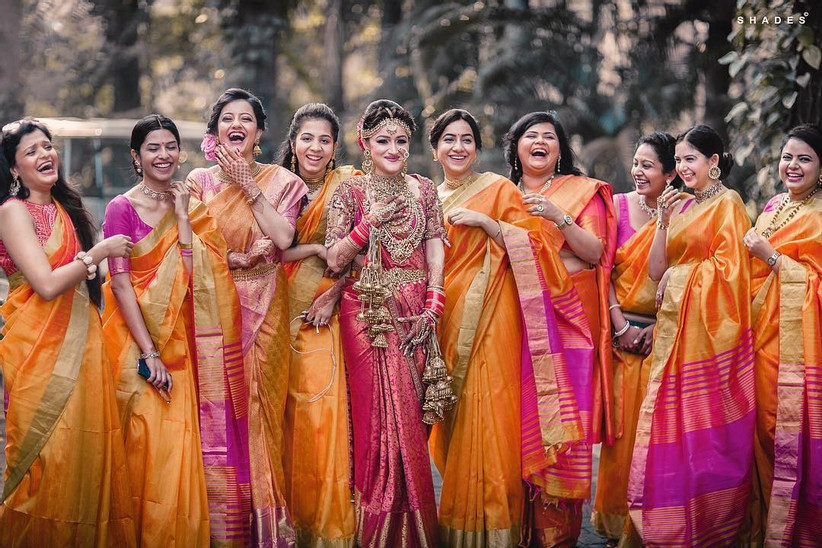
The designs tend to be small and large motifs of flowers, leaves, etc. The easiest way to tell power loom Kalamkari from the original is by the softness of the cloth. While this cloth is soft, the power looms one is rough and stiff.
Kalamkari’s lesser-known yet marvellous, colourful, expensive, and vibrant cousin is the hand-painted Kalamkari from Sri Kalahasti, in southern Andhra Pradesh. Here, artisans take months to paint beautiful designs, mostly of gods or scenes from Hindu mythology, in vibrant colours, over cotton and silk sarees.
Contrary to common belief, silks are not always difficult to maintain. Kancheevaram silks can be hand washed at home comfortably with Reetha (soap nut) or a gentle fabric wash. Dry singly on the line if possible. Sarees should not be hung but stacked. Perspiration ruins silks, so do not store unwashed if worn for long hours. Again sarees may tear on the ironed creases if stored without wearing for a long time.
Store without ironing or take them out, open and air them once in a while. Pouches of dried neem leaves or camphor among the saris will keep insects away while adding jasmine or sandal pouches will keep them fragrant. Our practices preserve our saris. I have 60plus-year-old saris of my mother and mother-in-law in wearable condition.
A lot of women are petrified at the thought of wearing a saree. Panic is of the unknown. It will take only 10 minutes. Your fright will evaporate when you see your gorgeous graceful avatar in the mirror. You will find a new love!

Author’s bio:
Prabha Raghunandan ,a motivational speaker, enjoys writing poems, and stories, also kept a diary of her travels to known and unknown places as the National President of Inner Wheel India.
Her enthusiastic account, with eye for detail enriches her travel stories.
She can be reached at prabha325@gmail.com
Written by – A saree lover A saree wearer

